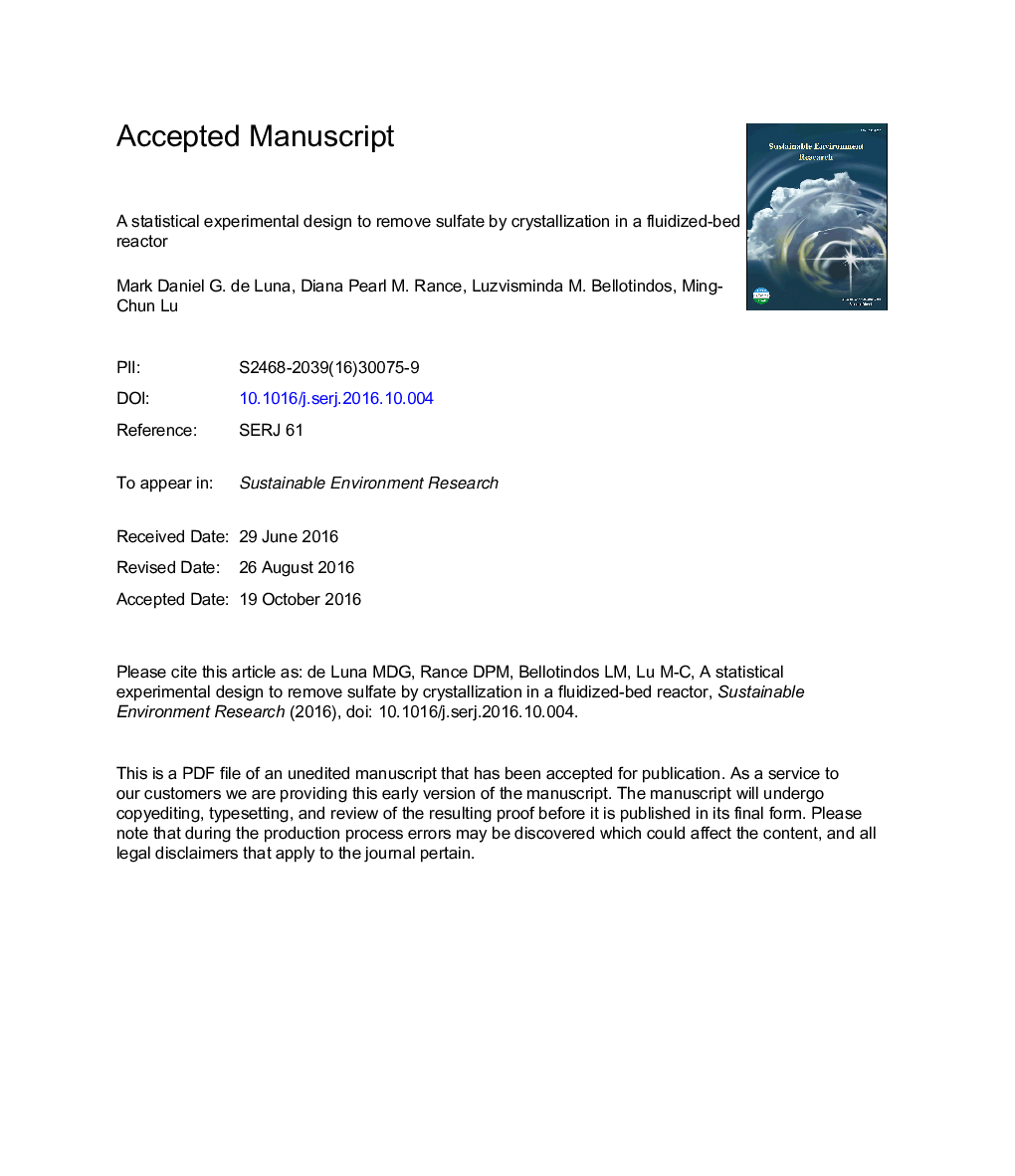| Article ID | Journal | Published Year | Pages | File Type |
|---|---|---|---|---|
| 8862966 | Sustainable Environment Research | 2017 | 26 Pages |
Abstract
This study used crystallization in a fluidized-bed reactor as an alternative technology to the conventional chemical precipitation to remove sulfate. The Box-Behnken Design was used to study the effects and interactions of seed dosage of synthetic gypsum, initial sulfate concentration and molar ratio of calcium to sulfate on conversion and removal of sulfate. The optimum conditions of conversion and removal of sulfate were determined and used to treat the simulated acid mine drainage (AMD) wastewater. The effect of inorganic ions CO32â, NH4+ and Al3+ on sulfate conversion was also investigated. Experimental results indicated that seed dosage, initial sulfate concentration and molar ratio of calcium to sulfate are all significant parameters in the sulfate removal by fluidized-bed crystallization. The optimal conditions of 4Â g seed Lâ1, 119.7Â mM of initial sulfate concentration and [Ca2+]/[SO42â] molar ratio of 1.48 resulted in sulfate conversion of 82% and sulfate removal of 67%. Conversion and removal of sulfate in the simulated AMD wastewater were 79 and 63%, respectively. When ammonium or aluminum was added to the synthetic sulfate wastewater, significant conversion of sulfate was achieved.
Keywords
Related Topics
Life Sciences
Environmental Science
Environmental Engineering
Authors
Mark Daniel G. de Luna, Diana Pearl M. Rance, Luzvisminda M. Bellotindos, Ming-Chun Lu,
